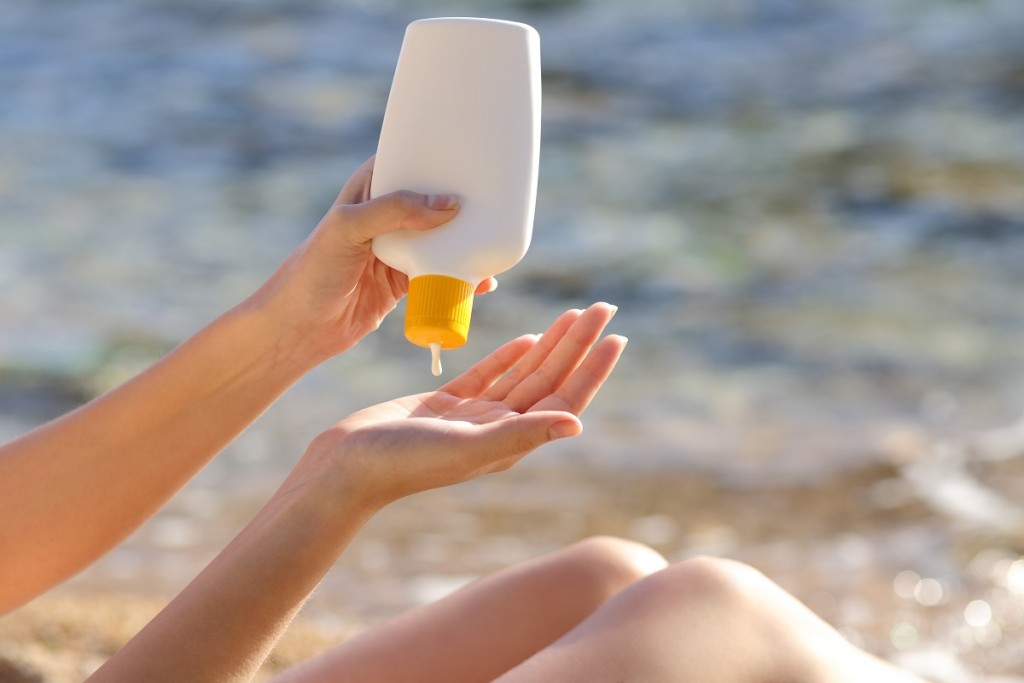The Environmental Working Group (EWG) has just released its 2017 Guide to Sunscreens report, which contains the 14 worst-scoring sunscreens for babies and young kids.
The purpose of applying sunscreen to our children is for their protection against the sun’s potentially-harmful rays. However, according to a new report from the EWG, some sunscreens can actually be unsafe for kids and babies.
Some of the sunscreens performed well on tests in the EWG’s 2017 Guide to Sunscreens. These were mostly mineral-based with zinc oxide and/or titanium dioxide as active ingredients. Parents should still be wary of products which contain low percentages of these ingredients as they may contain other ingredients that boost the SPF on the label without actually protecting from other skin damages, says the report.
Ingredients to avoid which may pose safety concerns include: retinyl palmitate, a form of vitamin A that is linked to sun sensitivity and oxybenzone, which, is a hormone disrupter. Steer clear of a sunscreen with SPF of over 50, says the report. Most people think the higher the SPF, the better the protection however, this is not the case.
,EWG senior analyst and lead author of the 2017 Guide to Sunscreens, Sonya Lunder says “People select products based on their SPF, or sunburn protection factor, and mistakenly assume that bigger numbers are better. Consumers think that they’ll get twice as much protection from an SPF 100 sunscreen as from an SPF 50 product.”
She also added “In reality, the extra protection is negligible. For example, an SPF 50 sunscreen that is properly applied will block 98 percent of UVB rays; an SPF 100 sunscreen will block 99 percent. In reality people rarely apply enough sunscreen to achieve this level of protection.” She added, “Every sunscreen needs to be reapplied at least every 2 hours, so when used correctly, sunscreen with SPF values in the range of 30 to 50 will offer adequate sunburn protection, even for people most sensitive to sunburn.”
The following 14 products received low scores in EWG testing:
- Banana Boat Kids Continuous Spray Sunscreen, SPF 100
- Banana Boat Kids Sunscreen Lotion, SPF 100
- Coppertone Foaming Lotion Sunscreen Kids Wacky Foam, SPF 70
- Coppertone Sunscreen Continuous Spray Kids, SPF 70
- Coppertone Sunscreen Lotion Kids, SPF 70
- Coppertone Sunscreen Lotion Water Babies, SPF 70+
- Coppertone Sunscreen Stick Kids, SPF 55
- Coppertone Sunscreen Stick Water Babies, SPF 55
- Coppertone Sunscreen Water Babies Foaming Lotion, SPF 70
- CVS Health Children’s Sunstick Sunscreen, SPF 55
- Equate Baby Sunscreen Lotion, SPF 70
- Neutrogena Pure & Free Baby Sunscreen, SPF 60+
- Neutrogena Wet Skin Kids Sunscreen Spray, SPF 70+
- Up & Up Kids Sunscreen Sticks, SPF 55
Reasons for these being bad include that the advertised SPF is higher than the actual protection it offers, that the sunscreen contains a potentially-harmful ingredient like oxybenzone, or that the aerosol spray design doesn’t provide complete skin coverage.
